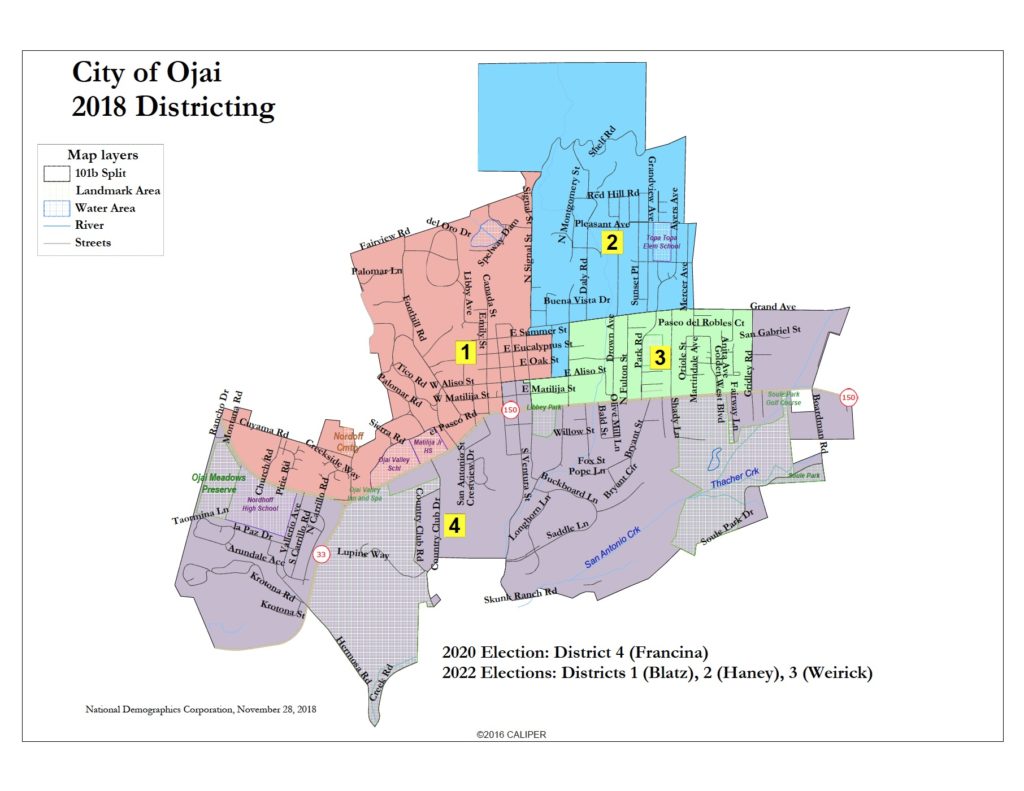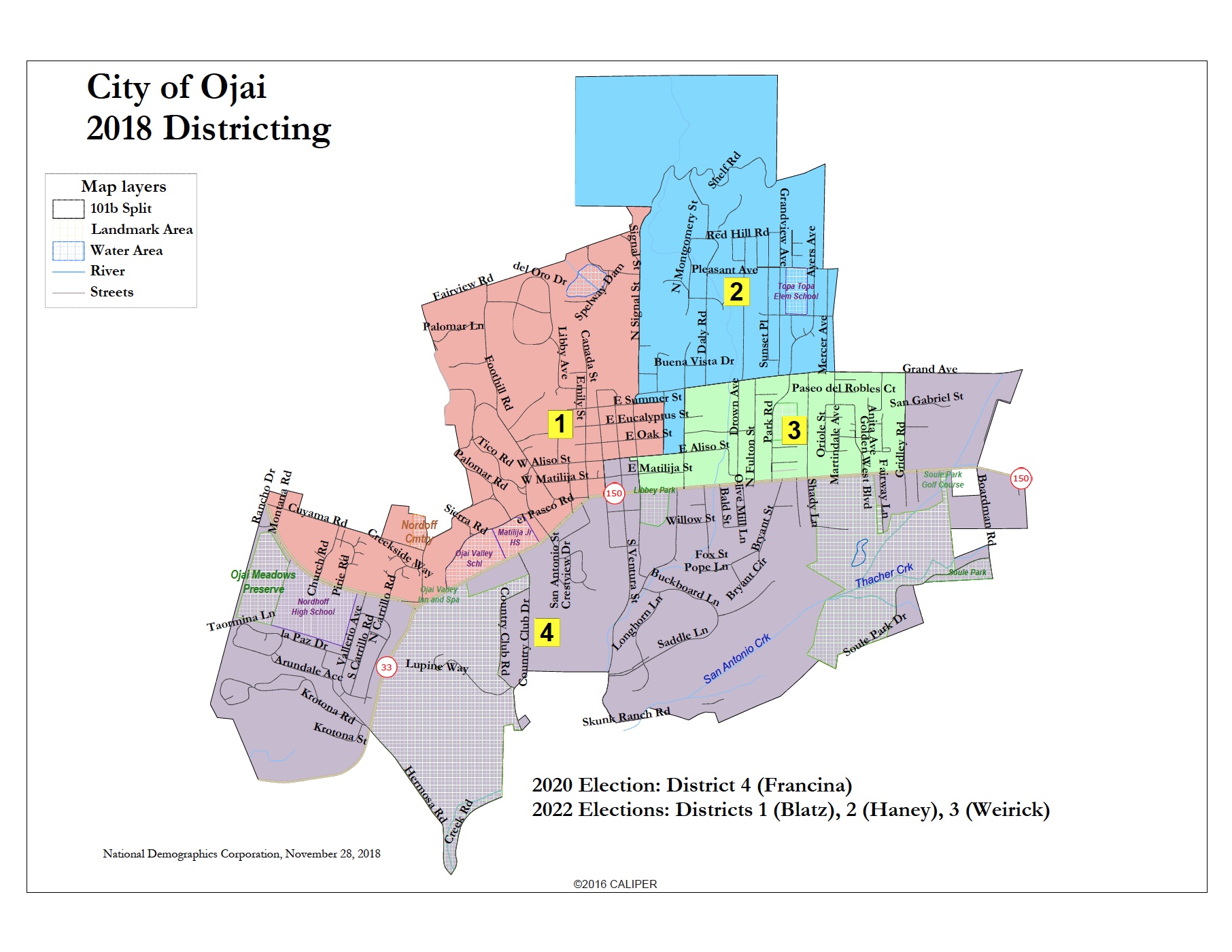EDITOR’S NOTE | By Bret Bradigan
One City, 5,000 Votes
The Perils of Race and Partisanship
Ojai’s voting districts

Ojai’s voting districts
In 2020, voters will face distinct and far-reaching decisions. Are we a representative democracy, or are we sliding further down the path toward totalitarianism?
I refer, of course, to the city’s decision, under pressure from a regional advocacy group, to split the city into five voting districts for city council seats. The idea is to get more Hispanic representation on the council. That’s a worthy goal, but moving from at-large elections to district-based isn’t the way to go about it.
Ojai’s Hispanic or Latino population is about 12.1 percent according to census figures. Total non-white percent of city dwellers is 17.7 percent. By random distribution, you’d think at least one of our council seats would be filled with a person of color. At the present time, since Severo Lara decided in 2016 to give up his council seat in a run for mayor, we’ve had none.
Last December, the council adopted the district-based system, splitting the city into four electoral zones with about 1,850 people and 1,300 registered voters in each. District 4 — which basically runs along Ojai’s southern border from Taormina to Boardman Road — is currently represented by Suza Francina. That will be first district election next year. The other three districts will be up for vote in the 2022 elections. The mayor will be elected from the city as a whole every two years.
My concern is that these districts hardly form coherent neighborhoods with distinct characteristics. As far the goal of more Hispanic representation, only District 3 with 28 percent comes closest to parity. It’s quite likely that nothing will change. It’s even more likely that Ojai voters have bigger things on their decision list for elected representatives than race. In fact, for by far the majority of voters, race is not a factor.
It seems to me that there is enough to divide us these days — border walls and racial quotas and kids in cages — that we don’t need to follow that example in Ojai. It’s the same with the directly elected Mayor position. It seems sensible now because in Johnny Johnston we have an experienced, capable manager. But the passions of the electorate can run hot and fickle. In much the same way as demagogues and opportunists can take advantage of collective fears and anxieties win nationwide, so it could happen in Ojai, where, because of our small scale, the damage done could be substantial.
Our current system is non-partisan. We aren’t meant to know the political affiliations of candidates. Of course, there are clues where our council people lie along the political spectrum, but again, just like race, it’s far from the most salient fact in our decision-making process. We like it that way, because a nonpartisan system gives politicians much more leeway to work together rather than appealing to the most rabidly partisan of their constituents.
There’s a story about Louisiana populist Huey “Kingfish” Long that illustrates the perils of a race-based and/or partisan system. Running for his first statewide office in the 1920s, he was campaigning in the southwest part of the state, with its large Cajun, Catholic population. He knew he’d have to appeal to those people if he had any chance of being elected governor.
Long told the crowd that “when I was a boy every Sunday at 6 in the morning, I’d hitch up the buggy to the mule and take my Catholic grandparents to Mass, then I’d get back home in time to take my Baptist grandparents to their service.”
His aide remarked after the speech, “I didn’t know you had Catholic grandparents.” Long shot back, “Catholic grandparents? You fool. I didn’t even have a mule.”


Leave A Comment